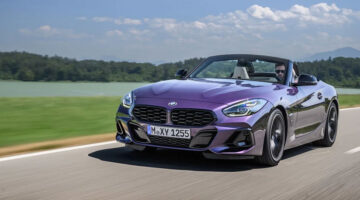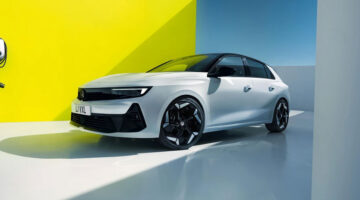We sit down with Henrik Wenders, Head of Project Management for the BMW i8, and discuss the i8 and the future of the i sub-brand.
[Not a valid template]Henrik, the new i8 is just one bold move of many that demonstrates a new range of technologies and developments within BMW. Rather than just marketing the new models within the BMW line up a new sub-brand has been created. What was the reasoning behind this?
Well, for more than 40 years we have had the M brand, which stands for high performance cars you can use on-track and off. So we know that for the customer it makes sense. With BMW i we decided to establish a sub-brand that is easily recognizable as a high-tech industry with a balance of dynamism, efficiency and sustainability. Future technologies can be integrated in to the i line so it will always keep pace with innovation.
So what components of technology and manufacturing from within the BMW i range do you see being incorporated into the regular BMW line up?
BMW i is the think tank for innovation. Here we are industrializing carbon fibre and we are using an electric drive train, to name just a few. It goes without saying though that we will be transferring technology throughout BMW and Rolls-Royce. This was the case when we started utilizing aluminium in the production process. It was the case when we started with diesel engines, and also with carbon fibre which we used first with the BMW M: that by the way was the first model where we industrialized CFRP for the roof to reduce weight and lower the centre of gravity. We now have the knowledge of carbon fibre that we leverage within BMW i and are sharing this knowledge within other model lines.
Presumably though in terms of roll out there has to be an infrastructure to support the i-range…
Yes, and this is not an easy process but in this situation it is good that we are a German manufacturer. The Germans are very critical. We know what we are talking about because we feel it ourselves.
But you are relying a lot on your distributors and dealers to operate at the same technological level as BMW. Potential customers will need to feel secure that they are supported by their local dealer especially when buying a new technology product. How are BMW approaching this?
These are normal questions that everyone has and it isn’t rocket science. People will ask: is the battery reliable? Will I purchase a car which after ten or 20 years is not usable? Do I invest and then it is blown away? These are questions that you have to answer at the beginning before you start the project because when you design a car and want to market it globally you have to take an insurance classification. Cost of ownership is very important, recyclability, repairability, service concept. Is it manageable on a local basis? Do we have to fly in each BMW i8 from Dubai to Munich when something is broken? So therefore you have to think things through right from the beginning and have the relevant answers right from the start.
It is an integral part in the development process to consider repairability, service, maintenance etc. because this has a high impact on the cost of ownership and it is not just the list price which is relevant. It is the total cost of ownership.
The halo car in the i-range is the BMW i8, which was recently in Dubai hot weather testing…
Yes, this a regular part of the development process with all of our models, not just with the BMW i range. Cold climate testing and hot weather testing. Once you decide to market a product globally you have to take in to account the relevant temperature differences. In order to guarantee that the customer appreciates the same driving performance and behaviour of the product you have to integrate this in to the development process. We tested the i8 close to the polar circle for extreme cold and we went to Tokyo and Dubai for hot weather conditions.
How did extremes in temperature affect the BMW i8? What special considerations were required for testing the new iTechnology that perhaps wouldn’t be necessary in other models within the BMW range?
With an electric drive train you have to make sure that the battery is in a precise temperature band. This is pure physics and it is true for every battery. They can absorb and provide energy only in a certain temperature band which is between 28ºC and 32ºC. In Norway we have to heat up the battery and in Dubai we have to cool it down. This is why we have the heating/cooling system on board. Yes, it does consume energy but not that much so you would not feel it in an extremely different consumption level. Customers will be able to appreciate the i8 in Norway at -20ºC and the same for customers in Dubai at +40ºC or even +50ºC. Actually the car will manage it automatically to keep the battery in this specific temperature band. We also use this technology for the passenger compartment. Because we have all components on board then why use it only for the battery? You can precondition your car from your smart phone. You can tell the car when you would like to leave and what temperature you would like to approach the car. While the car is plugged in you can use the energy from the socket and you can start your journey in a comfortable environment.



